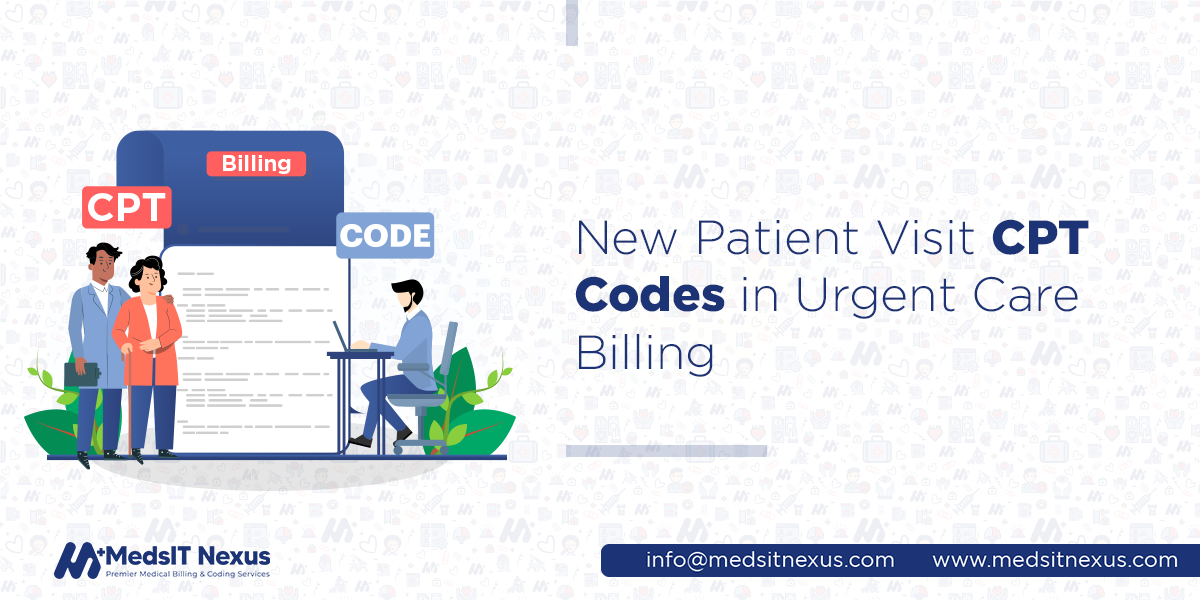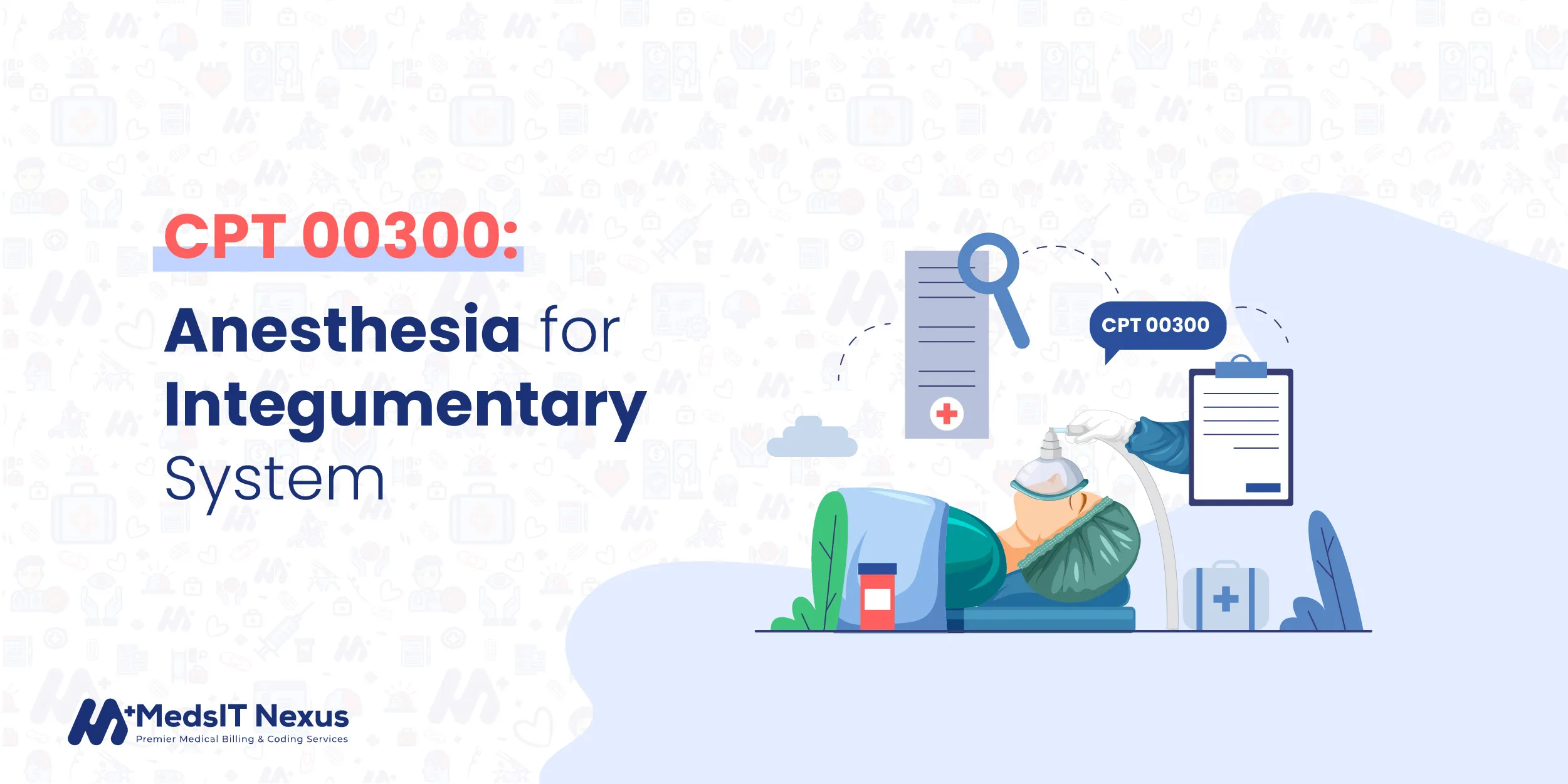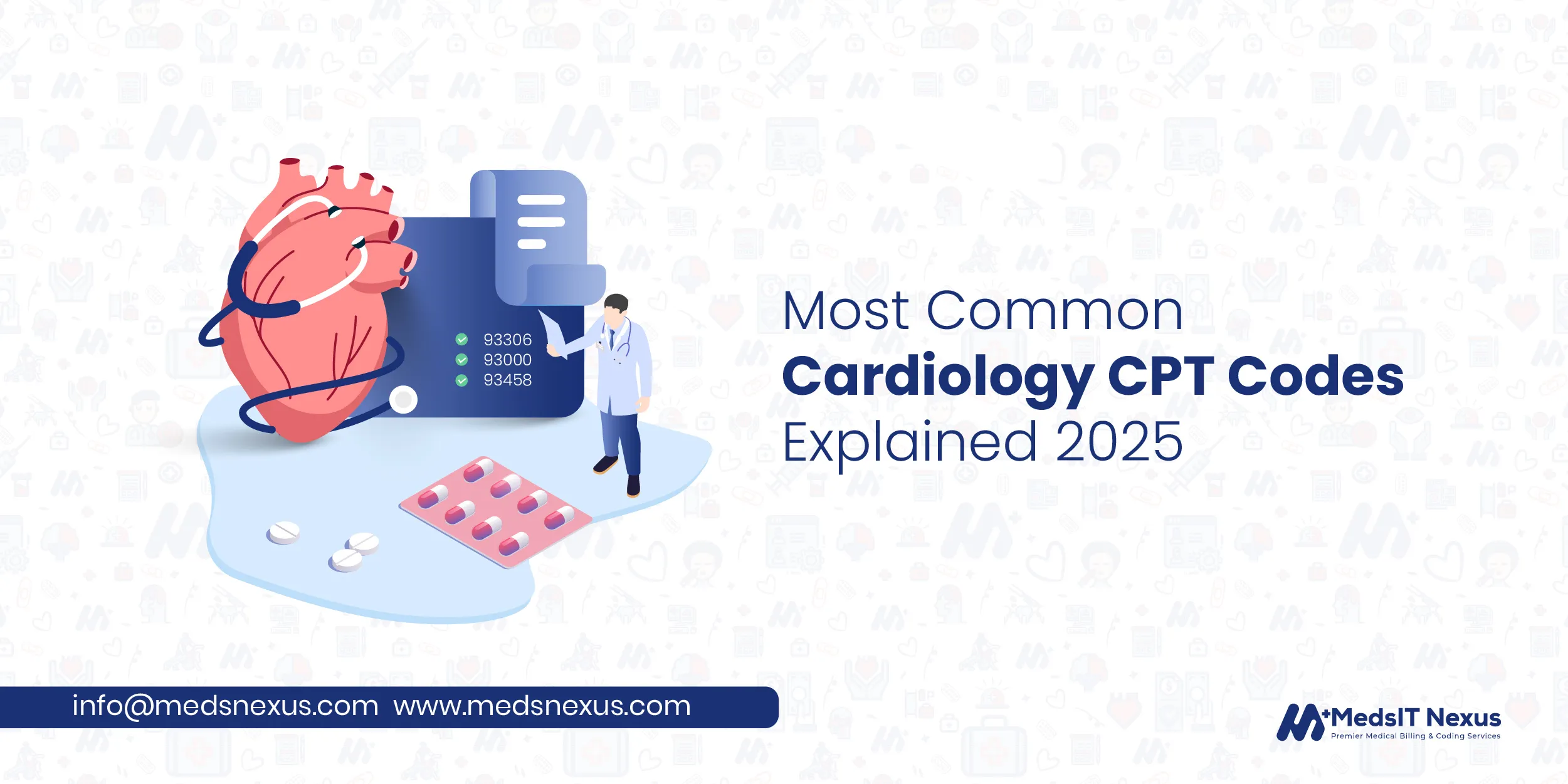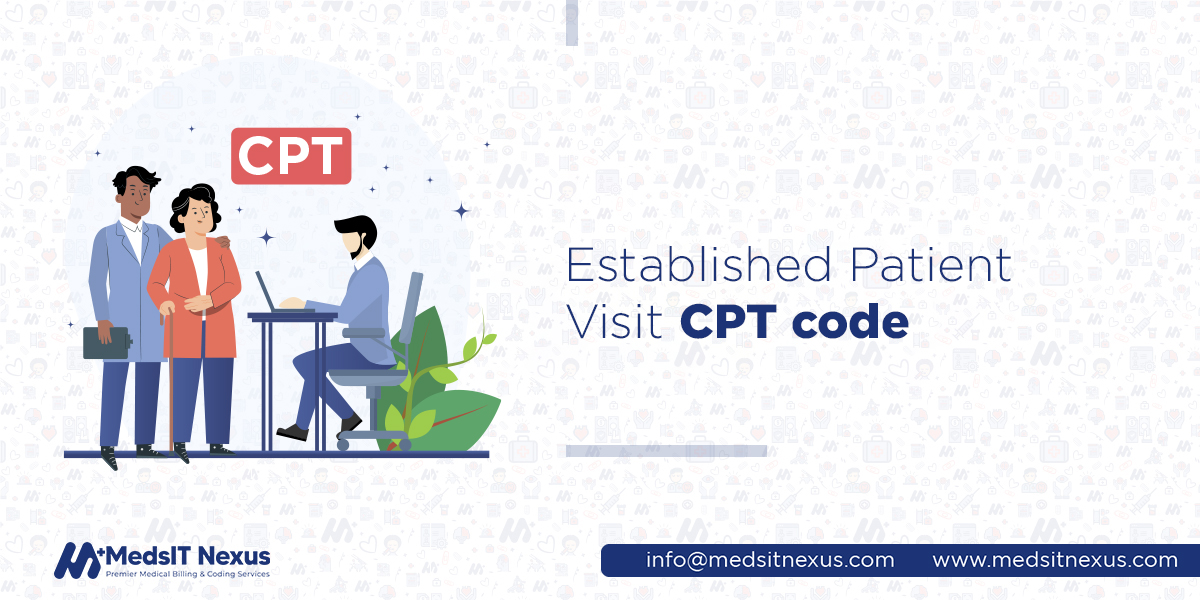New Patient Visit CPT Codes in Urgent Care Billing

Handling the complexities of urgent care, such as managing new patient office visits, has become increasingly challenging for urgent care facilities. Differentiating them from the rest of the patients is a tedious task that is further complicated by filtering out the Medicare urgent care CPT codes list using appropriate codes to generate a claim for new patient visits. A slight error in any of the issues can lead to a claim denial, which can cause delayed or no reimbursement. So, as an urgent care provider, you need to pay attention to this issue and make necessary amendments to avoid lost revenue. In this article, we will discuss who new patients are, how they are different from established patients, and how to apply CPT codes for new patient visits in urgent care billing.
Who is a New Patient?
Drawing a line between new and established patients is essential to ensure accurate billing in urgent care. A new patient in urgent care is a person who has not been rendered any professional services from the urgent care provider or another provider in the same specialty and group practice within the last three years. On the contrary, the established patient has received professional services in the previous three years. However, to accurately distinguish between both, you must first understand the terms 'professional services' and 'group practice. Incorporating your learnings into coding for urgent care services will increase chances for a swift reimbursement.
Professional Services in Urgent Care
Professional services in urgent care are the services provided in a face-to-face encounter by a physician or qualified healthcare provider and documented using appropriate CPT codes. This definition is crucial in distinguishing between new and established patients. In urgent care facilities, a patient will be deemed new if they have not been involved in any face-to-face encounter with the provider. The patient will thus be billed using CPT codes specific to new patients' office visits. This distinction is vital in urgent care settings, where patients seek immediate attention for acute medical issues.
Group Practice in Urgent Care
Group Practice is a term used for healthcare organizations where multiple healthcare providers work together. Basically it is a kind of medical group or clinic. In such practices, distinguishing between new and established patients is much more complicated. This is because the patient visiting a provider for the first time may have visited another provider within the same facility. For instance, an athlete who is injured visits a physiotherapist in an urgent care facility for pain relief. If the same athlete, after some time, visits the facility to receive care from an orthopedic specialist within the same facility, they would be considered a new patient. The critical element in this scenario is the specialty designation of the healthcare provider.
New vs Established Patient in Urgent Care
As already stated, the established patient is someone who has been provided services in the last three years; there is one other difference. To apply new patient visit CPT codes, you need to fulfill all three key components- history, examination, and medical decision-making. In contrast, established patient visits (coded from 99211-99215) necessitate only two of these components. In the urgent care context, where patients often seek prompt attention for acute issues, accurately coding encounters ensures fair reimbursement and reflects the services' complexity. Despite this, there may be scenarios where the same service components result in a higher relative value unit (RVU) for an established patient code than the appropriate new one. This can occur due to the differing coding requirements and the nature of urgent care visits, where established patients may present with more complex conditions or require more extensive management despite failing to meet the stringent criteria for new patient coding. Therefore, for urgent care facilities, understanding and appropriately applying new and established patient coding guidelines are essential for financial reasons and maintaining quality care standards.
Consultations vs. new patient visits
Sometimes a patient is only referred to a physician for consultation. Such an encounter may not be charged using new patient cpt codes, rather it will be deemed merely as consultation service. According to CPT a consultation is “a type of service provided by a physician whose opinion or advice regarding evaluation and/or management of a specific problem is requested by another physician or other appropriate source.” For example, a patient who has suffered an accident fracturing their leg without any visible damage to the head portion visits an urgent care facility. Such a person might be sent to a concussion specialist to completely rule out any head damage. Such a service will be considered consultation as the providers will only ask questions. It is to be noted that consultation codes are uniformly applied to both new and established patients.
New Patient CPT Code Range 99202 – 99205
New patient CPT code range describes the initial visit with a healthcare provider. These codes were last revised in the year 2021 by the AMA to better reflect the level of complexity and time required for a visit. The new patient CPT code range is as follows:
- CPT Code 99202 (H3)
This code is used for a new patient visit that requires a low level of medical decision-making. A comprehensive problem-focused history, examination, and simple medical decision-making are all part of this 15–29-minute appointment for a new patient. - CPT Code 99203
CPT Code 99203 describes a New patient office or other outpatient visits that requires a comparatively high level of medical expertise. The typical time for this visit is a 30 to 44-minute appointment. A thorough history, physical examination, and simple medical decision-making are all part of it. - CPT Code 99204
This code is used for a new patient visit that requires a high level of medical decision-making. The typical time for this visit is 45–59-minutes. Documentation requirements for new patient CPT code 99204 includes a thorough examination and history and difficult medical decision-making. - CPT Code 99205
This code describes a level 5 new patient visit that requires a comprehensive level of medical decision-making. The typical time for this visit is 60–74-minutes . Documentation requirements for new patient CPT code 99205 includes thorough history and examination and highly complicated medical decision-making.
It’s important to note that CPT code selection for new patients in urgent care is not just based on the typical face-to-face time alone but also the level of history, exam, and medical decision-making documented in the medical record. The typical face-to-face times listed here are guidelines and should not be the sole factor in determining the accurate code from the new patient CPT code range.
Why are New Patient Visit CPT codes used in Urgent Care?
In urgent care the new patient CPT code range is used to document the amount of expertise involved and time spent while tending to a patient with urgent needs. The need to use them is for following reasons:
- These codes reflect the level of medical knowledge and experience required to manage a patient's needs. It can vary from straightforward issues to extensively complicated ones necessitating different codes.
- It also reflects the amount of time invested on providing a service.
- The codes are used to enhance communication between patient, providers and insurance companies regarding billing a new patient in an urgent care setting.
- Each CPT code for new patient office visits is reimbursed by the provider.
Bill New Patient Visits in Urgent Care with MedsIT Nexus
MedsIT Nexus provides urgent care centers with the perfect platform to deal with the medical billing for New Patient Office Visits. Coding errors while billing new patients in urgent care are a thing of the past. With the help of our experts, they not only ease the documentation process for you but also provide you with a hassle-free coding experience. We understand the importance of time taken and the complexity of a medical procedure and help you receive reimbursement in accordance with that. So, if you want to outsource your urgent care billing services, remember MedsIT Nexus is an ideal choice.
Samuel White, MBA-HC, CPAR -
Lead Author & Senior Healthcare Revenue Cycle Strategist at MedsIT Nexus
Leads editorial process for the publication of Technical RCM guides, reimbursement optimization case studies, and compliance-focused research content, expert evaluations of RCM software and medical billing solutions.
Other Editors
Related Posts

CPT 00300: Anesthesia for Integumentary System





